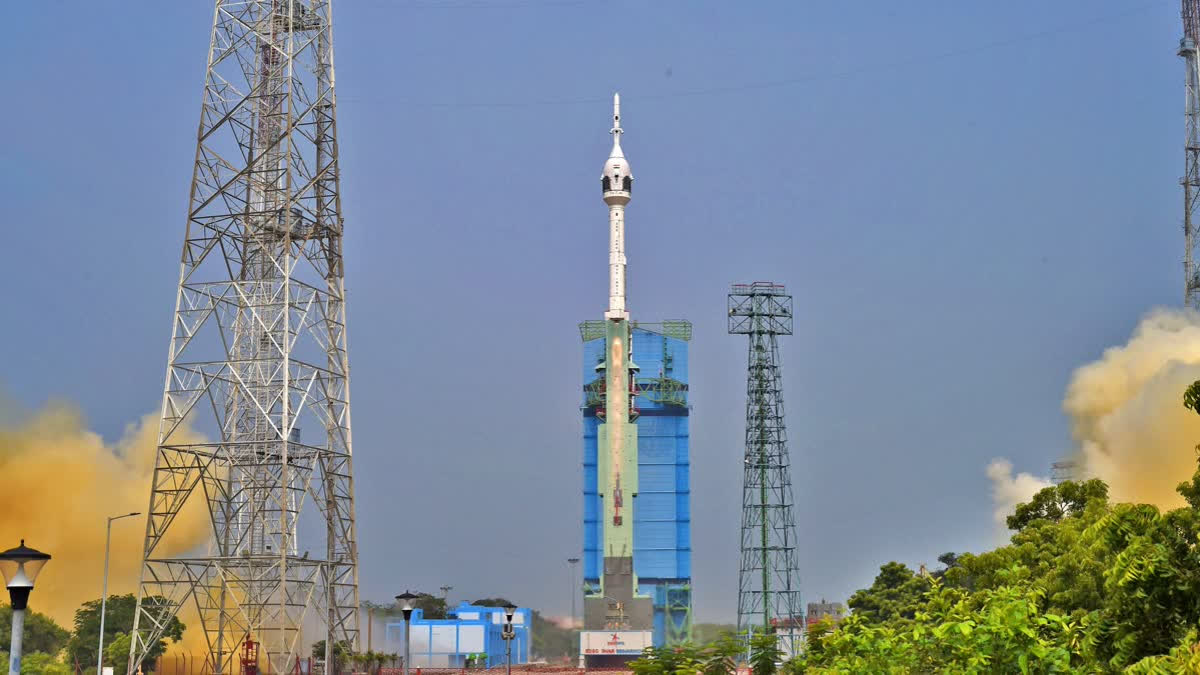Bengaluru: ISRO achieved a successful launch of the Gaganyaan Test Vehicle Development Flight Mission-1 (TV-D1 Flight Test) from Sriharikota on Saturday. During the initial launch attempt earlier in the day, the exercise was temporarily halted when onboard computers detected an anomaly, leading to an aborted launch.
Speaking about the Test Mission of the Jawaharlal Planetarium, senior scientist Anand told to ETV Bharat that ISRO chief S Somanath acknowledged scheduled TV-D1 rocket liftoff was delayed due to an anomaly, that underwent further analysis. He also explained that smoke was coming out from the engine ignition system of the TV-D1 rocket, which led to the brief delay in the mission. Subsequently, at 9.35 am, ISRO confirmed the identification and rectification of the errors, rescheduling the second launch for 10 am. The ISRO achieved a successful launch of the Test Vehicle.
The Crew Module (CM) and the Crew Escape System (CES) launched by the Test Vehicle Abort Mission (TV-D1) to an altitude of roughly 17 kilometres above earth splashdown safely in the sea approximately 10 kilometres from Sriharikota’s eastern coast at 10.11 am, only 11 minutes after lift-off, following successful deployment of the main parachute, he explained.
India has set ambitious goals of sending three astronauts into a 400-kilometre orbit of the earth for a three-day mission. Upon successful completion of this mission, India will join the exclusive group of nations for sending astronauts into space, said senior scientist Anand.
Space expert Girish Linganna speaking about the Test Mission to ETV Bharat, said the Test Vehicle Mission aimed at demonstrating how well the Crew Escape System functions in initiating an abort condition, separating the Crew Module from the vehicle.
Two Indian Navy ships INS Shakti and the SCI Saraswati were deployed at a safe distance to retrieve the empty capsule. Both these vessels took part in the Crew Module’s crucial recovery process. INS Shakti is the Indian Navy’s fleet tanker and SCI Saraswati is a multi-purpose support vessel that is meant to supply offshore installations and carry out research work for the Shipping Corporation of India.
Both these ships are capable of carrying helicopters on board, which acts as a force multiplier and offers airborne assistance to their respective primary missions, he said. Much like ejection seats in fighter jets, the Crew Escape System serves as a safeguard for astronauts in the event of a catastrophic error during their spaceflight, which could put the spacecraft they are aboard in jeopardy. This automatic system is designed to be triggered by the onboard computer when it detects malfunctions or other critical issues shortly after liftoff, Girish Linganna said.



